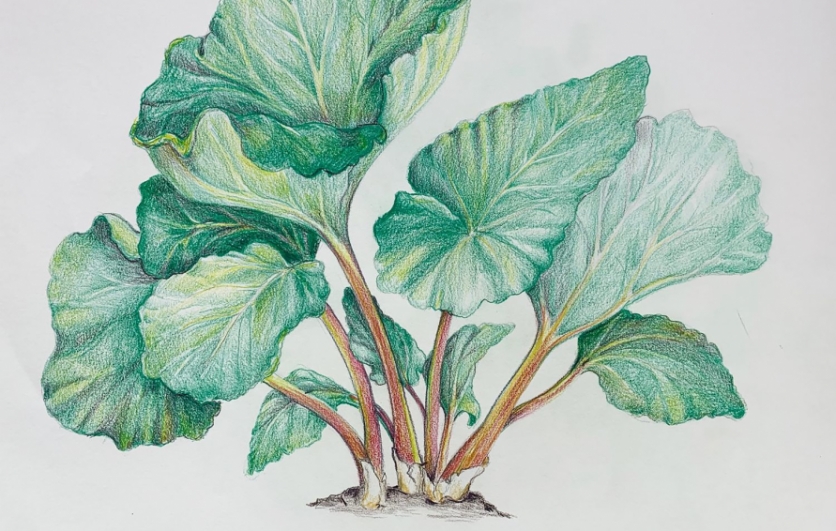Rhubarb: Sassy, Sweet, Savory and Sustainable

Rhubarb is especially easy to grow, and truly a gift that just keeps on giving. Some families have kept pies filled from the same rhubarb patch for generations. One plant can easily last 20 years, but appreciates division and replanting every eight to 10 years to renew its productivity. The plants prefer rich soil and plenty of moisture, but they can take imperfect conditions. Since vigorous growth requires a dormant period in winter, rhubarb is well suited to the climate of Western New York.
This sassy vegetable likes to act like a fruit and is best known for its early summer appearance in pies, crisps and jams. Often paired with strawberries to balance its tartness, it can also provide a depth to many other sweet and savory dishes.
HOW TO HARVEST
The best time to harvest rhubarb is early in the growing season: May, June and maybe July. Some say, “Pull the stalks until the peas are ready.” The stalks are most tender at that time and will likely not need to be peeled. Neither the thickness nor the color of the stalks is a good indicator of ripeness. Opt for stalks that are at least 10 inches long, but leave your scissors or clippers at home! Pull the stalks out from the base of the plant with a quick tug, since cutting makes the plant vulnerable to rot.
Rhubarb leaves are toxic due to high amounts of oxalic acid, so leave them in the field or compost pile. Certain pests like flea beetles don’t like them either, which helps with plant maintenance. In fact, some gardeners create a spray using the leaves to deter flea beetles from attacking other plants. Chop the leaves and put them in boiling water. Let them simmer for 15 minutes and steep until cool before straining and spraying.
EXTEND THE SEASON
You can harvest rhubarb stalks later in the season. They’re not inedible; they’re just tougher. You will want to peel them (the outer layer zips off with a knife and a tug) and you will lose much of that pretty red color. But once you cook them, you will only notice their fresh flavor with no hint of toughness. When the stalks become dry and hollow it really is time to let them rest and grow.
Rhubarb is a great vegetable to freeze. Cut the stalks into half-inch slices and assemble them on a baking sheet in your freezer. Once they are frozen, pop them into freezer containers to store. I pre-measure them into cup and half-cup amounts to match my favorite recipes. Rhubarb dehydrates well. Once dried, it can be ground into a powder for smoothies or made into fruit leather. It can also be rehydrated. It won’t regain a crunch, but you are usually stewing, baking, or simmering the pieces in recipes anyway. Blanching before dehydrating will remove some acidity, making the dehydrated product taste a bit sweeter.








